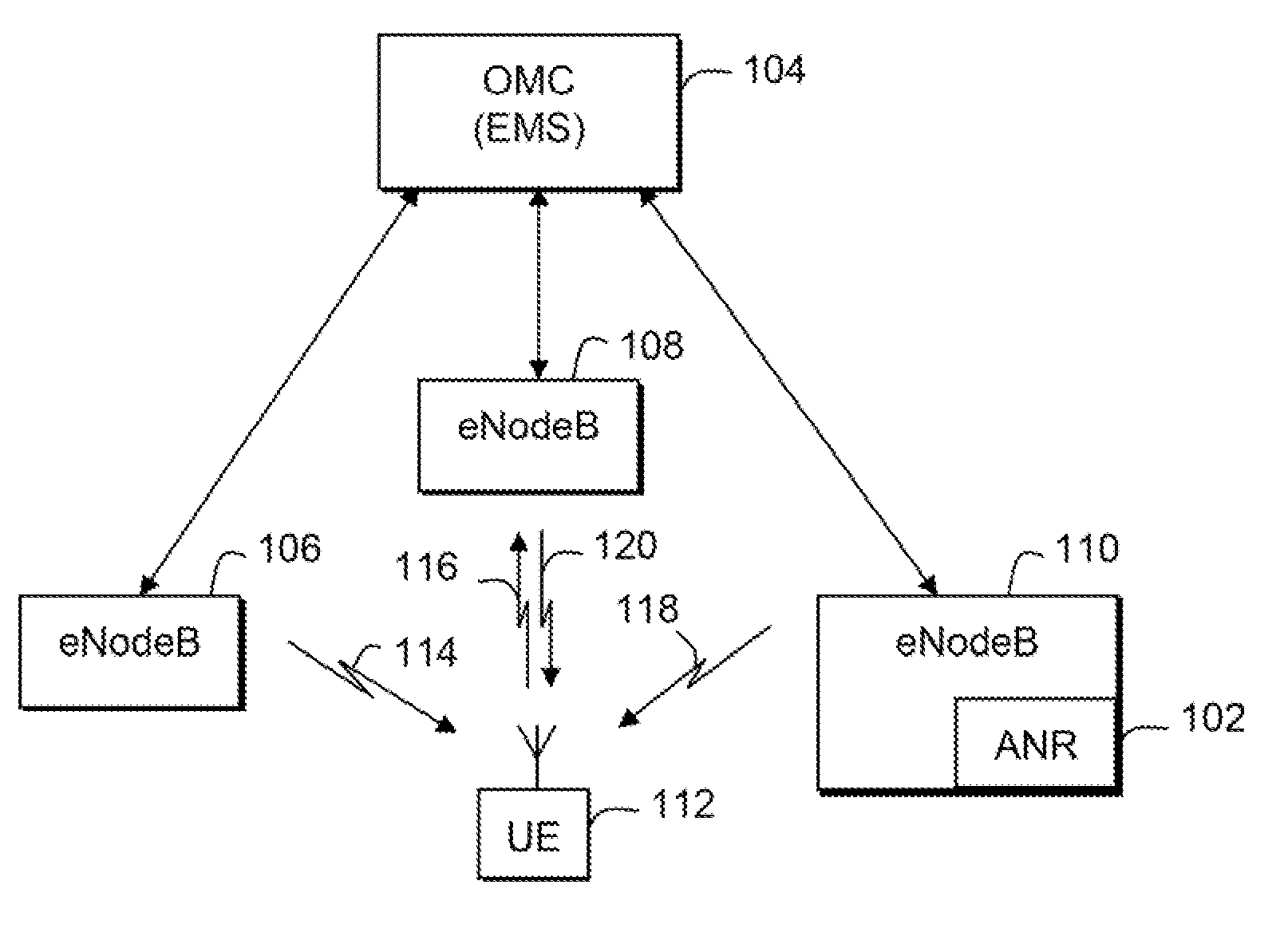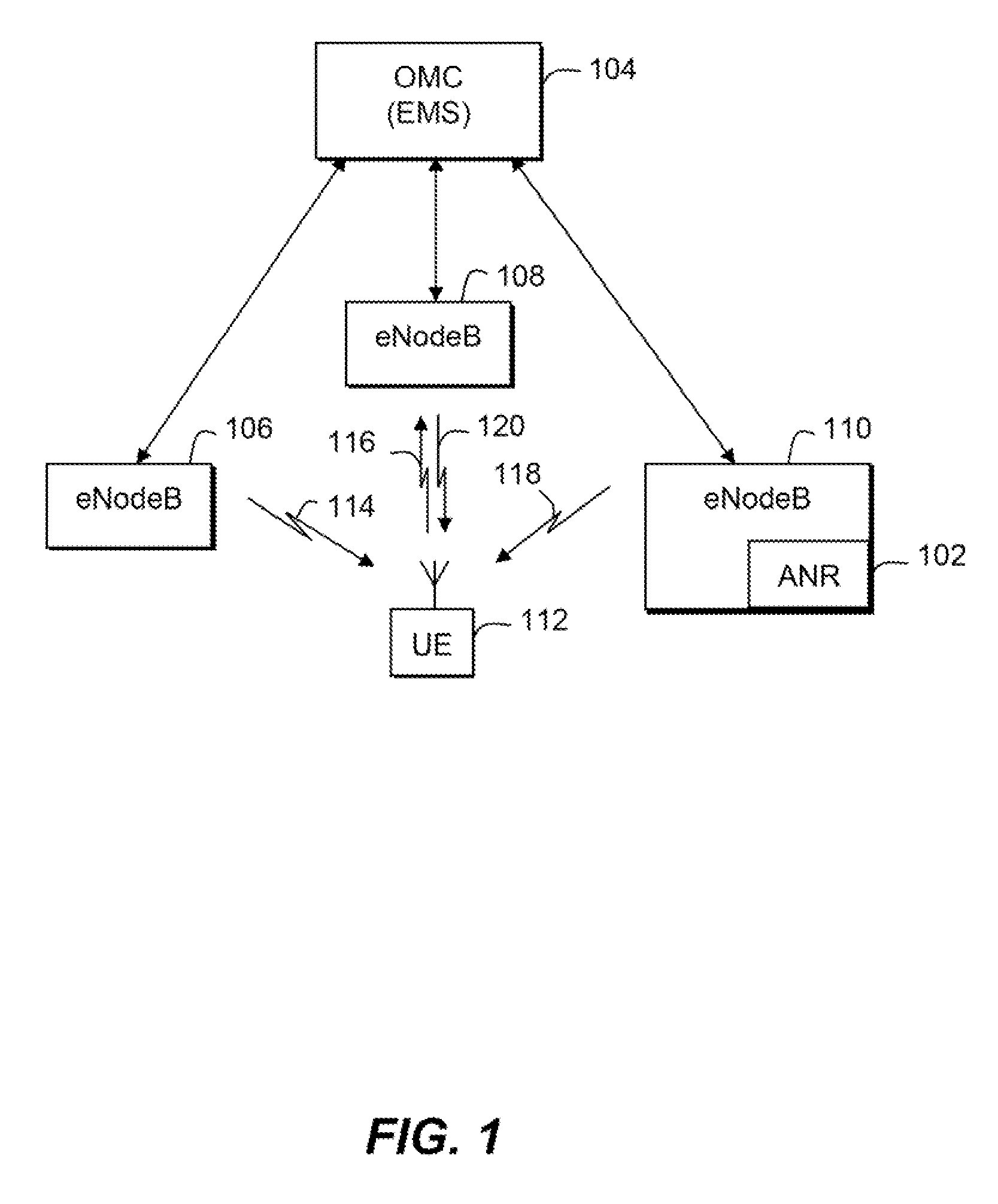Physical-layer cell identity assignment in a communication system
a communication system and physical layer technology, applied in the field of physical layer cell identity assignment in the communication system, can solve the problems of inability to extend the current approach to 4g scenarios where a ue may need to consider large numbers of neighbouring cells, inability to assign individual pilot signal scrambling codes or frequency/base station identity combinations, and inability to achieve the effect of extending the current approach to large-scale 4g scenarios
- Summary
- Abstract
- Description
- Claims
- Application Information
AI Technical Summary
Problems solved by technology
Method used
Image
Examples
Embodiment Construction
[0015]The present invention enables a distributed PCID planning process that removes a purely centralized control function that requires extensive planner / operator interaction. In particular, the present invention enables a distributed self organizing network (SON) that allows a new cell to choose a PCID autonomously, while minimizing potential conflicts with neighbouring cells.
[0016]The following description focuses on embodiments of the invention applicable to 4G communication systems such as LTE and WiMAX. For example, the present invention can be implemented for LTE enhanced NodeBs (eNB) and LTE centralised-SON where the functionality is lightweight enough so that it could be hosted in an element management system (EMS) for small networks, or an OMC for large networks. Alternatively, each eNB could host the functionality of the present invention. The present invention could also be applied to the WiMAX base stations. However, it will be appreciated that the invention is not limi...
PUM
 Login to View More
Login to View More Abstract
Description
Claims
Application Information
 Login to View More
Login to View More - R&D
- Intellectual Property
- Life Sciences
- Materials
- Tech Scout
- Unparalleled Data Quality
- Higher Quality Content
- 60% Fewer Hallucinations
Browse by: Latest US Patents, China's latest patents, Technical Efficacy Thesaurus, Application Domain, Technology Topic, Popular Technical Reports.
© 2025 PatSnap. All rights reserved.Legal|Privacy policy|Modern Slavery Act Transparency Statement|Sitemap|About US| Contact US: help@patsnap.com



